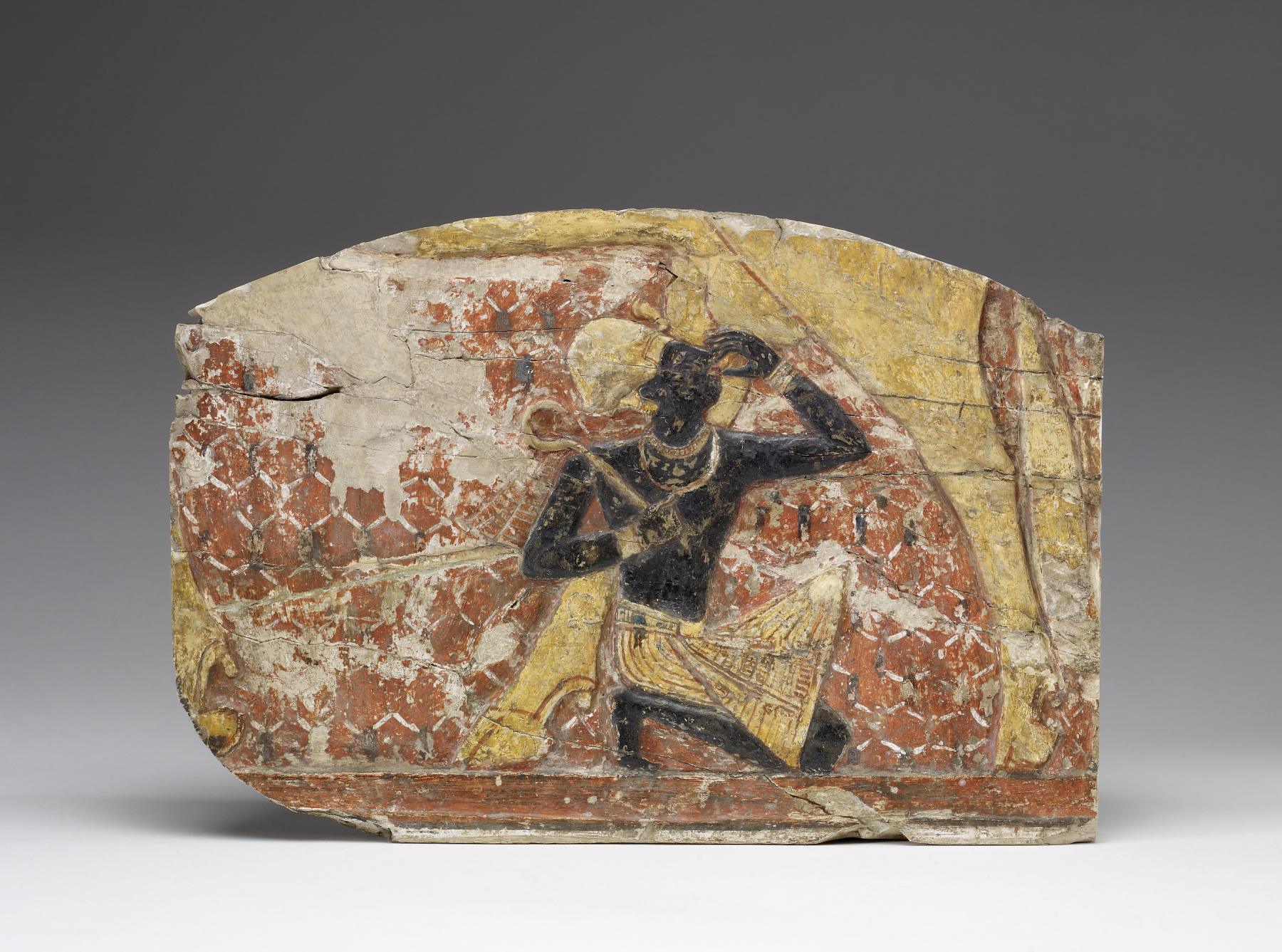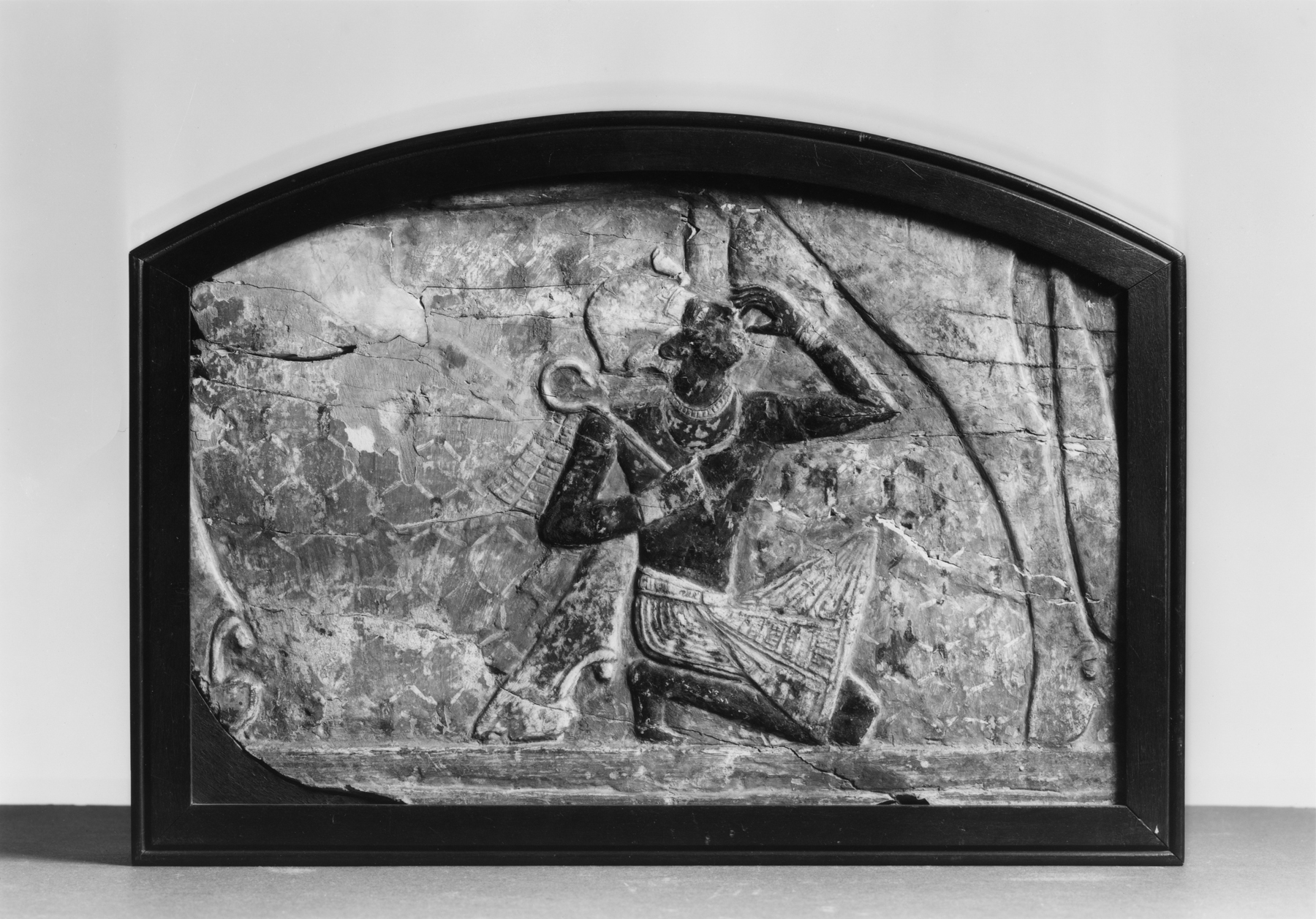Relief Displaying the King Suckled by the Hathor-Cow
(Ancient Egypt and Nubia )
Pharaohs from Nubia ruled Egypt during the 25th dynasty (747–656 BCE), but this image predates that period by hundreds of years. Instead of race, the black color of the king’s skin may indicate that he is deceased. In Egyptian royal art, black or green flesh is associated with Osiris, the god of the underworld, but also with fertility and rebirth. The Egyptians called the lands around the Nile, with very dark, rich soil fertilized by annual floods, the “Black Land” (Kemet) in contrast to the “Red Land” (Deshret) of the deserts.
Provenance
Provenance (from the French provenir, 'to come from/forth') is the chronology of the ownership, custody, or location of a historical object. Learn more about provenance at the Walters.
R. Haas, Paris, [date and mode of acquisition unknown]; Joseph Brummer, New York and Paris, 1922, by purchase [inv. no. N574]; Henry Walters, Baltimore, 1922, by purchase; Walters Art Museum, 1931, by bequest.
Exhibitions
| 2013-2014 | Egypt’s Mysterious Book of the Faiyum. The Walters Art Museum, Baltimore. |
Conservation
| Date | Description | Narrative |
|---|---|---|
| Examination | examined for condition | |
| 2/12/1964 | Examination | examined for exhibition |
| 7/7/1967 | Treatment | loss compensation |
| 7/5/1979 | Treatment | cleaned; other |
| 8/6/1998 | Examination | survey |
| 3/16/2000 | Treatment | cleaned; re-housed |
Geographies
Egypt, Thebes (Place of Origin)
Measurements
H: 8 3/4 x W: 12 13/16 x D: 1 15/16 in. (22.2 x 32.5 x 5 cm)
Credit Line
Acquired by Henry Walters, 1922
Location in Museum
Accession Number
In libraries, galleries, museums, and archives, an accession number is a unique identifier assigned to each object in the collection.
In libraries, galleries, museums, and archives, an accession number is a unique identifier assigned to each object in the collection.
22.121




